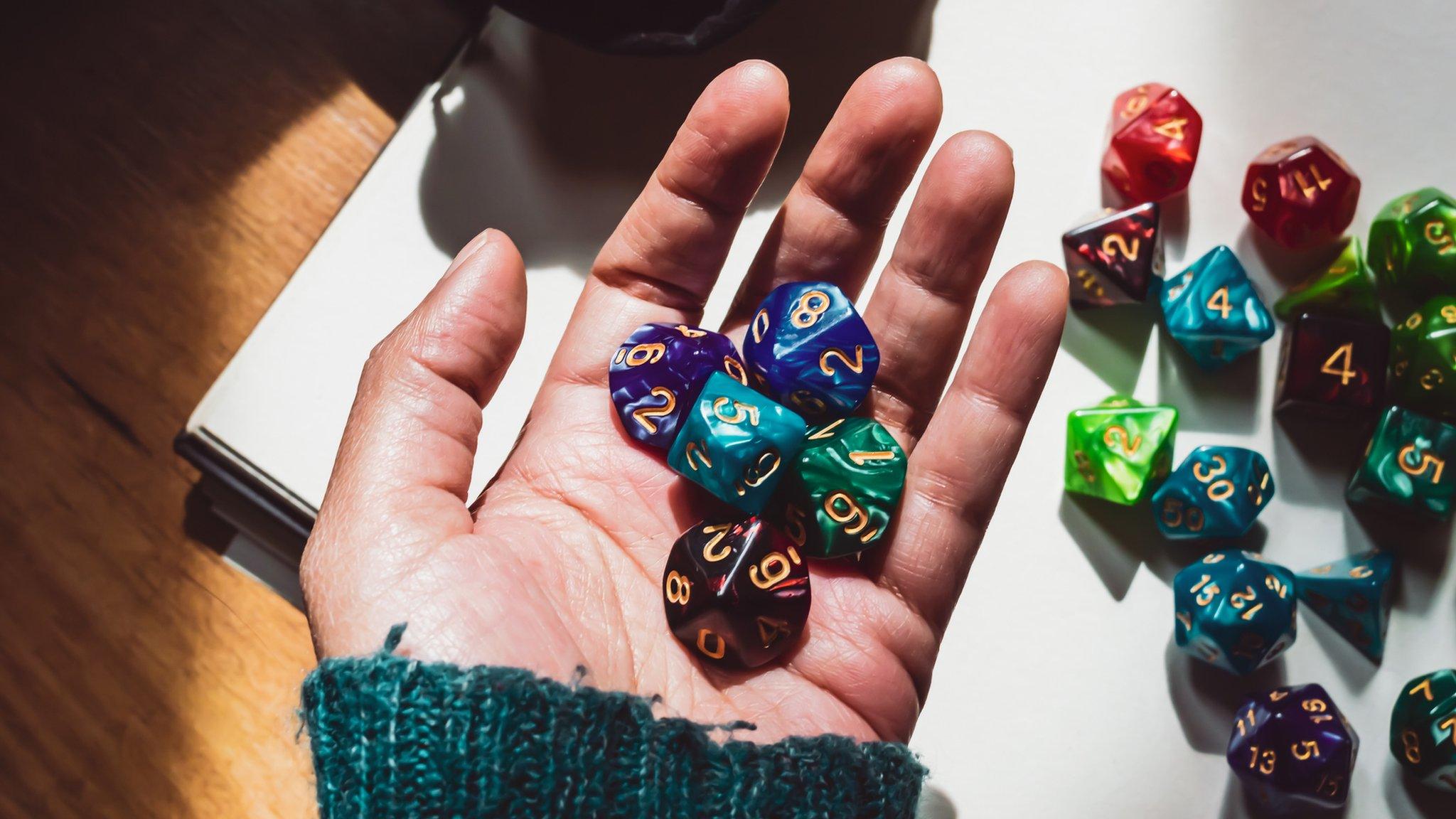Dungeons & Dragons: 50th anniversary of the D&D role-playing game
- Published
- comments
Dungeons & Dragons: The cast of High Rollers, Brennan Lee Mulligan, Liam O'Brien, and Jasper William Cartwright tell us what they love about the role-playing game
Dungeons & Dragons is celebrating its 50th birthday!
First released in the US in 1974, more than 50 million people have played Dungeons & Dragons since then, making it one of the most popular role-playing games in the world.
Over the last 50 years it has gone through lots of changes and has even inspired popular TV series, movies and video games.
"D&D has a rich history, an exciting present, and a great future," said Kyle Brink, Executive Producer of the team making D&D at Wizards of the Coast.
But what is Dungeons & Dragons all about, how do you play it, and who invented it? Take a look below to find out all of its secrets!
What is Dungeons & Dragons?

Dungeons & Dragons (or D&D for short) is a role-playing adventure game.
In D&D, players team up to form an adventuring party of characters who explore imaginary worlds together and go on epic quests.
They are led in their adventures by a Dungeon Master (also known as the DM) who is the game's referee and storyteller.
The DM describes the places and creatures the players encounter on their adventure, and the players decide what they want their characters to do.
The success of their actions is decided by rolling dice - so if they roll well, the thing they're trying to do will probably happen, but if they don't roll well... it could go very differently!
A game, or campaign, can last a few hours, to weeks, months, and even years - and ends when the players or the DM decide on a big win-or-lose battle against a tough enemy.
How do you play Dungeons & Dragons?
Professional D&D player Jasper William Cartwright explains how to play Dungeons & Dragons.
D&D can be played by as few as two people, or as many as 20! But most people tend to play with a group of around four to seven.
As the game uses imagination to tell a story, players don't really need much to start playing, just a piece of paper with information about their character, and a set of dice.
A traditional D&D dice set is made up of seven different types of dice: A 20-side die, or D20, a 12-sided die or D12, a 10-side die or D10, an 8-sided die or D8, a six-sided die or D6 and a 4-sided die or D4.
Decisions in the game are made by rolling the D20 dice, and the others are used to work out more minor actions.
Another name for a 20-sided die, or shape, is an icosahedron
How to make a Dungeons & Dragons character
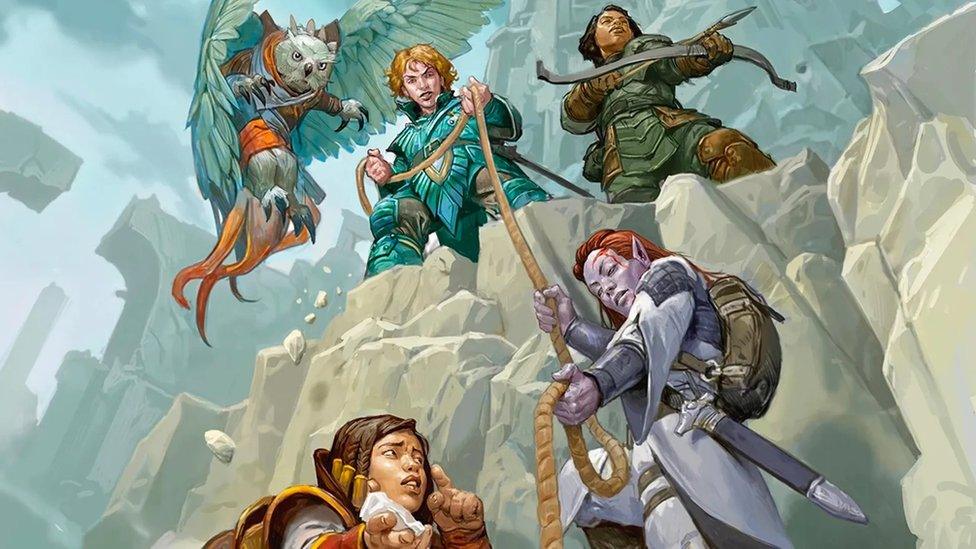
Each player is either given a pre-made character (which means all the information is already there for them), or can invent their own character.
There are nine main races to choose from: Dragonborn, Dwarf, Elf, Gnome, Half-Elf, Halfling, Half-orc, Human and Tiefling, but in total there are around 50 different races you can play as.
Next, players choose a class for their character, which is like a type of job, which include: Barbarian, Bard, Cleric, Druid, Fighter, Monk, Paladin, Ranger, Rogue, Sorcerer, Warlock and Wizard.
Critical success/Natural 20 - If someone rolls a 20 on their 20-sided dice, this is the highest they can roll, and is an instant and brilliant success.
Critical fail/Natural one - . If someone rolls a one on their 20-sided dice it is the lowest they can roll, and means that what they're trying to do will fail quite spectacularly.
Advantage/Disadvantage - This means you roll two 20-sided dice at the same time. If you're rolling with advantage you can use the higher number out of the two dice, and for disadvantage you use the lower number.
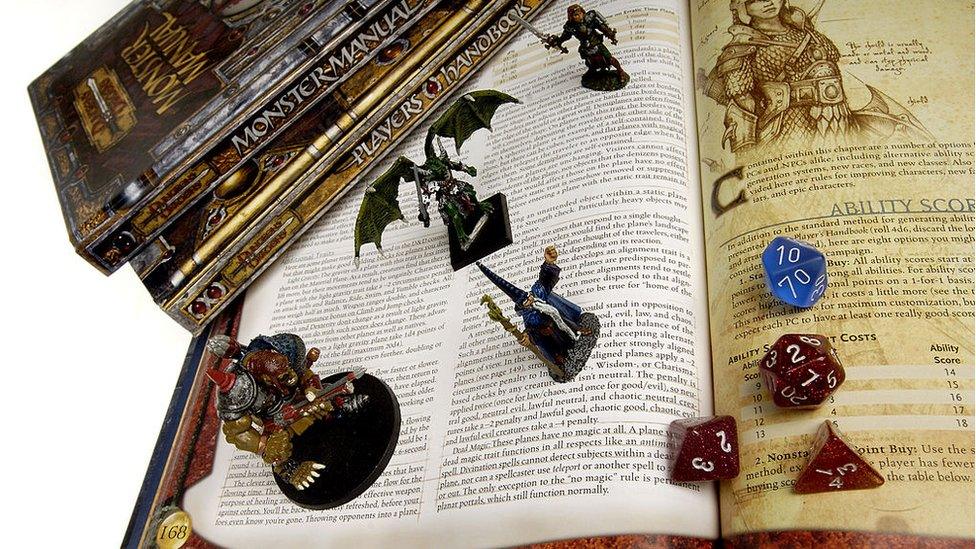
Players also roll to work out their 'stats' or 'ability scores' which are used as a way to measure what things your character is good or bad at, for example, are they clever or strong, funny or sneaky.
Characters can get stronger and boost their level by completing quests or defeating enemies.
When players have their characters, they are ready to go on an adventure created by the Dungeon Master.
Whilst playing the DM or player might ask to roll an ability check.
This can be for things like perception - to look around to see what you can see - or insight - to try to work out if a character is telling the truth or lying.
This uses a combination of the number rolled on a D20 dice, and your ability scores.
Strength: Athletics.
Dexterity: Acrobatics, Sleight of Hand, Stealth.
Intelligence: Arcana, History, Investigation, Nature, Religion.
Wisdom: Animal Handling, Insight, Medicine, Perception, Survival.
Charisma: Deception, Intimidation, Performance, Persuasion.
Constitution.
Who invented Dungeons & Dragons?

Gary Gygax and David Arneson created Dungeons & Dragons
Dungeons & Dragons was created in 1974 by American game designers 'Ernest' Gary Gygax and David Arneson.
Gary was inspired by fantasy role-play games and war board games and his children say they helped to pick the name Dungeons & Dragons, and played some early test versions.
The first 1,000 copies of Dungeons & Dragons were put together by hand in Gary's basement, and were a big hit, and sold out within the first year.
In 1975 in the UK, a man named Ian Livingstone and his colleagues Steve Jackson and John Peake set up a mail-order business called The Games Workshop - now a popular hobby game shop which you might know of today.
They heard of Dungeons & Dragons and liked it so much they spent all the money they had to buy six copies of the game and bring it to the UK.
The makers of D&D went on to give them the exclusive rights to sell the game in Europe for three years.
Dungeons & Dragons: BBC archive clip from 1983
In 1977 the game was split into two, basic Dungeons & Dragons which was a beginner-friendly version, and Advanced Dungeons & Dragons (or AD&D for short) which had a lot more rules for more experienced players.
In 2000 the 3rd edition of D&D was released, bringing big changes such as combining the basic and advanced versions into one game, and introducing the D20 system - which is usually how it's played today.
The fifth edition of the game (or 5e) came out in 2014, and is the version people use to play the game today and, according to the makers, it's also the most successful edition ever.
Dungeons & Dragons movies and TV shows
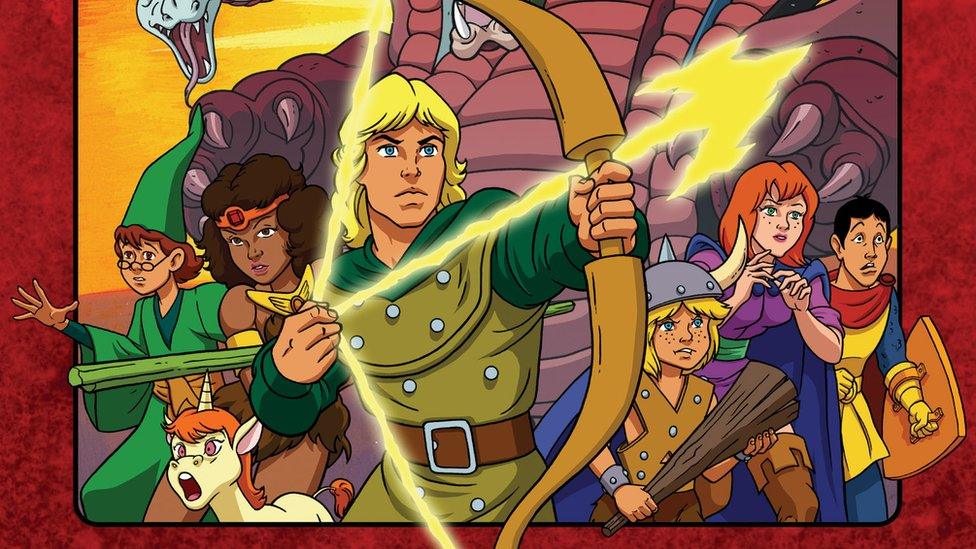
As well as a table-top role-playing game, there have also been Dungeons & Dragons TV series and movies over the years.
An animated TV series of Dungeons & Dragons was created in 1983 and followed six children named: Hank, Eric, Diana, Presto, Sheila and Bobby, who are transported into the realm of Dungeons & Dragons by a magical ride at an amusement park.
Throughout the series the children go on lots of adventures, guided by the Dungeon Master, whilst trying to find their way home, including fighting an evil wizard Venger, and a five-headed dragon called Tiamet.
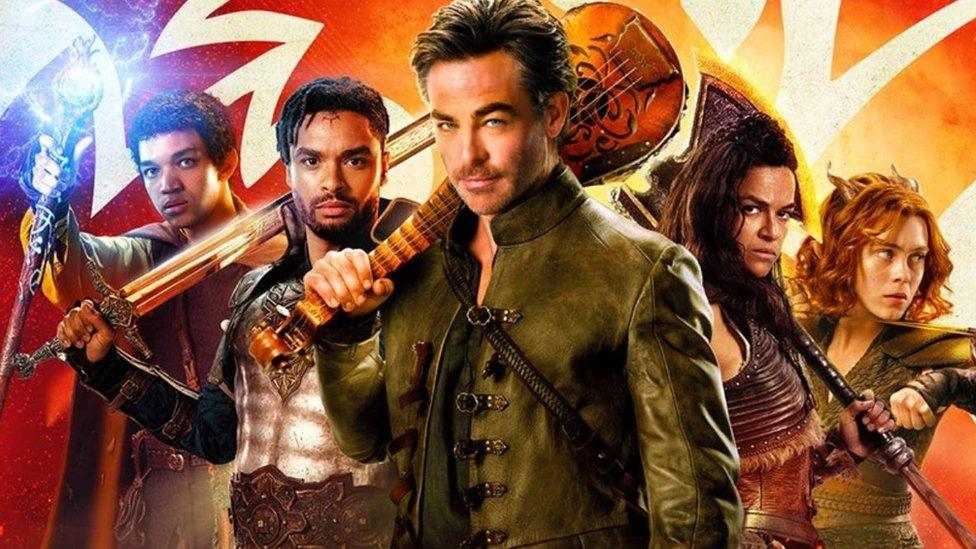
A series of live-action films were released in the 2000s but didn't do very well, but in 2023 Dungeons & Dragons: Honour Among Thieves was released.
The movie did fairly well at cinemas, and was positively reviewed and welcomed by lots of D&D fan groups.
Dungeons & Dragons and gaming
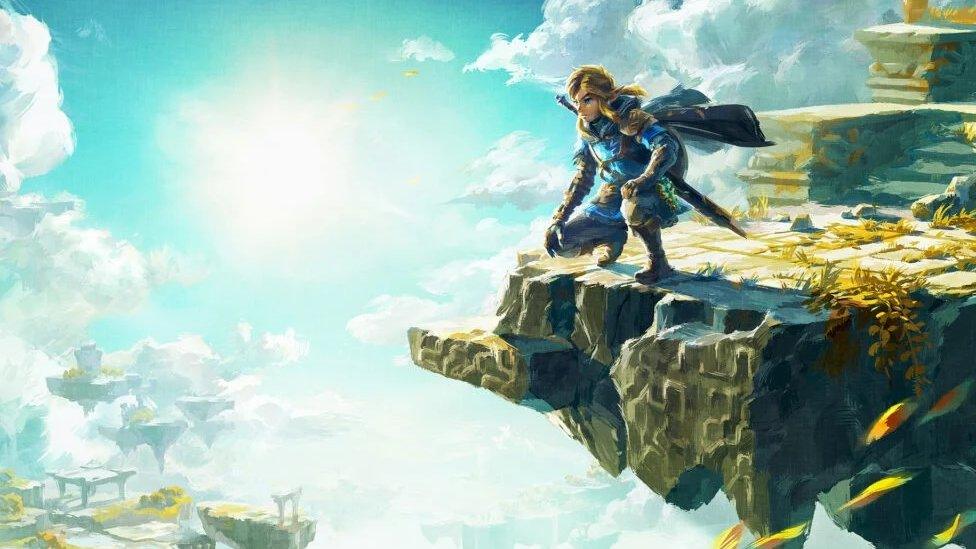
A number of games have used similar rules, places and monsters to those in Dungeons & Dragons over the years.
Also many popular RPG (role-playing games) videos games that you might know of today took inspiration from Dungeons & Dragons.
For example the creator of The Legend of Zelda games - Shigeru Miyamoto - said he took inspiration from video games that were inspired by D&D, as did the designer of the Final Fantasy video games - Hironobu Sakaguchi.
Games that involve creating and playing as a character, taking turns to fight a monster, having hit-points (or health-points), going on side-quests and exploring dungeons can all draw some inspiration back to Dungeons & Dragons.
Dungeons & Dragons controversy
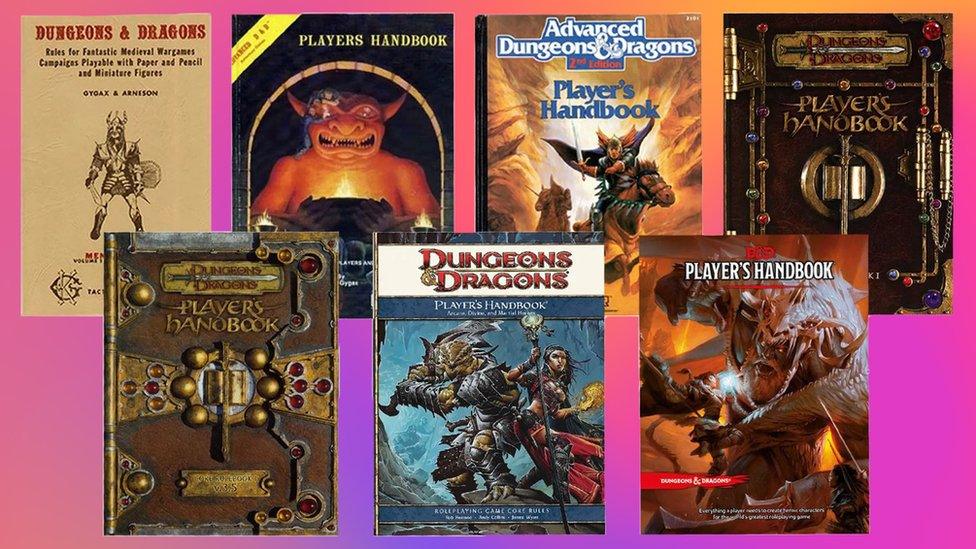
Since its creation, Dungeons & Dragons has sometimes proved to be controversial.
The early version of the game got into legal problems over the some of the names used, and their cross-over with J.R.R.Tolkein's works, including The Hobbit and The Lord of the Rings.
This led to Hobbits being changed to Halflings, Ents to Treants, and Balrogs to Balor in the game.
In the 1980s the game faced controversy when some parents and religious groups claimed it encouraged teenagers to worship demons or do witchcraft.
And after accusations the game featured stereotyping and a lack of diversity, in 2020 makers Wizard of the Coast announced changes to some characters, and also said that they wanted the game to be inclusive so that "everyone" could feel happy joining in.
What has been announced for the 50th anniversary so far?
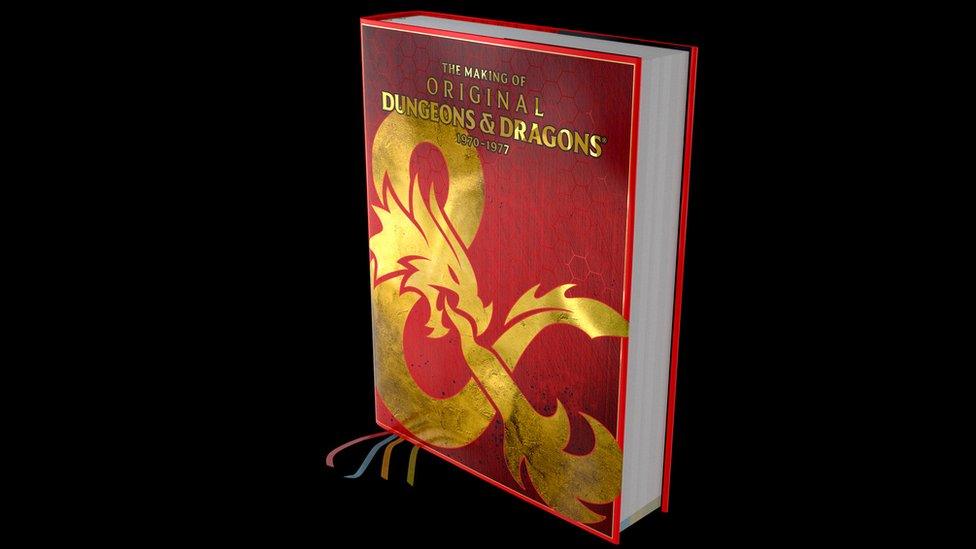
Wizards of the Coast - who own Dungeons & Dragons - have said they will be revealing celebrations for the 50th anniversary throughout 2024.
As well as brand new adventure campaigns, these so far include updates to their Player's Handbook (17 September 2024), Dungeon Masters Guide (12 November 2024) and Monster Manual (18 February 2024), and a book all about the history of D&D called The Making of Original Dungeons & Dragons: 1970-1977.
- Published17 November 2022
